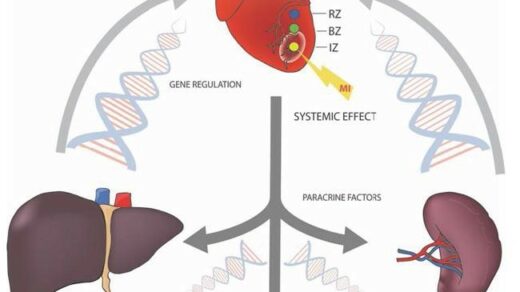“[…] HER2-low breast cancer is unlikely to represent a unique biologic or clinical subtype but rather a therapeutic target for a new class of HER2 targeted therapy: HER2-directed ADCs.”
For years, breast cancer has been classified as either HER2-positive or HER2-negative, determining whether a patient could receive HER2-targeted therapies like trastuzumab (Herceptin). However, a growing body of research suggests a middle category—HER2-low breast cancer—which has led to important changes in how clinicians approach treatment.
A recent review published in Oncotarget, titled “Evolving Concepts in HER2-Low Breast Cancer: Genomic Insights, Definitions, and Treatment Paradigms,” explores what this means for both patients and clinicians.
Understanding HER2-Low Breast Cancer
HER2-low breast cancer refers to tumors with some HER2 protein expression but not enough to be classified as HER2-positive. In medical terms this is defined by an immunohistochemistry (IHC) score of 1+ or 2+ without HER2 gene amplification. While this may seem like a minor distinction, it has major treatment implications.
Historically, HER2-negative and HER2-low cancers were treated the same way, primarily with hormone therapy (for hormone receptor-positive cases) or chemotherapy. However, the emergence of antibody-drug conjugates (ADCs), such as trastuzumab deruxtecan (T-DXd), has changed the treatment landscape. These drugs target HER2-positive cancers but have now been shown to work against HER2-low tumors as well, opening new options for patients who previously had few targeted therapies available.
The DESTINY-Breast04 trial was a breakthrough study proving that T-DXd significantly improves survival for patients with HER2-low metastatic breast cancer compared to standard chemotherapy.
Is HER2-Low Breast Cancer a Unique Breast Subtype?
One of the biggest questions in breast cancer research today is whether HER2-low breast cancer represents a distinct biological subtype or simply a new way of classifying tumors for treatment.
According to the Oncotarget review, led by first author Whitney L. Hensing from University of Missouri-KC School of Medicine, HER2-low breast cancer does not have a unique genetic profile that sets it apart from HER2-negative cancers. Instead, their characteristics seem to be primarily influenced by whether they are hormone receptor-positive (HR-positive) or triple-negative (TNBC).
Most HER2-low breast cancers fall into the HR-positive category, meaning they can also respond to hormone therapy. Additionally, the presence of low HER2 expression does not appear to significantly impact prognosis. This means that HER2-low breast cancer does not behave differently from HER2-negative breast cancer in terms of patient outcomes.
Rather than being a completely new biological subtype, HER2-low is better understood as a therapeutic category—a classification that helps identify patients who may benefit from newer HER2-directed treatments.
The Challenge of Defining HER2-Low Breast Tumors
Although the HER2-low classification is gaining importance, diagnosing and defining these tumors remains a challenge. One of the main issues is testing variability. Pathologists analyzing tumor samples often struggle to distinguish between HER2-low and HER2-negative cases. The difference between an IHC score of 0 and 1+ is very subtle, leading to inconsistencies in classification.
Adding to this complexity, HER2 expression can change over time. A tumor that was originally classified as HER2-low may later become HER2-negative, or vice versa, which raises important questions about how frequently HER2 status should be reassessed, especially in metastatic cases.
A newer concept, called HER2-ultralow, is also emerging. This term refers to tumors with barely detectable HER2 expression, which may still respond to drugs like T-DXd. Research into this category is ongoing, and future studies may further expand treatment possibilities for patients with ultralow HER2 expression.
New Treatment Options for HER2-Low Patients
The biggest impact of recognizing HER2-low breast cancer has been the availability of new treatment options.
Antibody-drug conjugates, such as T-DXd, are designed to attach chemotherapy directly to HER2-expressing cancer cells. Even with low levels of HER2, these tumors can still be targeted. The DESTINY-Breast04 trial confirmed that T-DXd offers significant survival benefits, making it the first HER2-targeted therapy for HER2-low patients.
Another promising drug is sacituzumab govitecan (SG), which has also shown effectiveness in HER2-low and triple-negative breast cancers. Unlike T-DXd, SG targets a different protein called TROP2 but has demonstrated significant benefits for patients with HER2-low tumors. The development of next-generation ADCs is already underway, with newer drugs being tested to improve efficacy and reduce side effects.
The Future of HER2-Low Breast Cancer Treatment
While recognizing HER2-low as a treatment category is a major step forward, several challenges remain. One key issue is standardizing HER2 testing to improve accuracy and reliability. Researchers are exploring digital pathology and AI-assisted imaging to reduce human variability and enhance precision in classification.
Another challenge is understanding how HER2 expression evolves over time, as tumors classified as HER2-low may later become HER2-negative, or vice versa. Ongoing research aims to determine the best strategies for retesting and adjusting treatments based on these changes, particularly in metastatic cases.
Researchers are also investigating whether combining ADCs with hormone therapy or immunotherapy could further improve outcomes. Clinical trials are already evaluating these approaches, offering hope for more tailored treatments.
Additionally, there is growing interest in HER2-ultralow tumors. The DESTINY-Breast06 trial is assessing whether these patients could also benefit from T-DXd. If successful, this could expand HER2-targeted therapy to an even larger group of patients.
Conclusion: A New Era in Breast Cancer Care
The recognition of HER2-low breast cancer is reshaping the way oncologists treat breast cancer. Although it is not a distinct biological subtype, identifying HER2-low tumors has expanded access to HER2-targeted therapies, significantly improving treatment options for thousands of patients.
With ongoing research and next-generation therapies on the horizon, the future holds promise for more personalized and effective breast cancer treatments. This shift is not just about changing classifications—it is about giving more patients access to life-saving treatments and improving survival rates.
Click here to read the full review in Oncotarget.
___
Oncotarget is an open-access, peer-reviewed journal that has published primarily oncology-focused research papers since 2010. These papers are available to readers (at no cost and free of subscription barriers) in a continuous publishing format at Oncotarget.com.
Oncotarget is indexed and archived by PubMed/Medline, PubMed Central, Scopus, EMBASE, META (Chan Zuckerberg Initiative) (2018-2022), and Dimensions (Digital Science).
Click here to subscribe to Oncotarget publication updates.
For media inquiries, please contact media@impactjournals.com.



